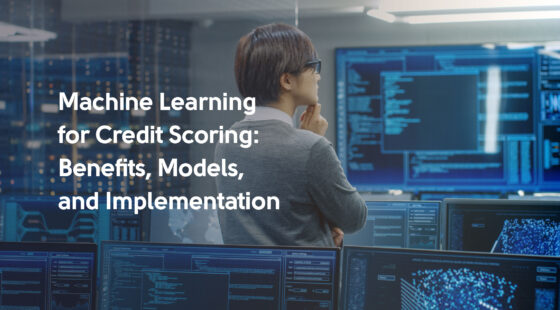The rise of Big Data has had a significant impact on the finance industry. Customers no longer walk into their local bank branch and deal with all of their banking needs with the assistance of a cashier. In fact, most clients now use smartphone apps and online banking, as well as traditional in-branch services, to access a wide range of financial products. With the rise of the internet and social media, the banking sector, like the rest of the global economy, underwent a fundamental upheaval.
The Big Data banking industry has access to a plethora of data sources that they can use to better understand their consumers and provide them with more personalized services and products. For example, Big Data for banking can be looked at from the lense of spending patterns, credit information, financial position, and monitoring social media to better understand consumer behaviors and patterns. Big Data for banking customer analytics drives revenue opportunities.
This blog post is the first in a series dedicated to Big Data across different verticals. Today, we are focusing on the direct and crucial impact of Big Data financial services.
What is Big Data?
Big Data is a collection of organized, semistructured, and unstructured data that may be mined for information and used in machine learning, predictive modeling, and other advanced analytics initiatives. Big Data processing and storage systems, as well as technologies that facilitate Big Data analytics, have become a regular component of data management architectures in businesses.
The three V's are frequently used to describe Big Data:
- high volume of data generated, collected, and processed in many environments;
- great variety of data types commonly stored in Big Data systems;
- and the velocity or speed with which most of the data is generated, gathered and processed.
Doug Laney, a Gartner analyst, coined the famous three Vs in 2001. Several other V's, such as veracity, value, and variability, have subsequently been added to various formulations of Big Data.
Importance of Financial Big Data in Banks
Big Data in finance or banking Big Data refers to the petabytes of organized and unstructured data that may be utilized by banks and financial institutions to predict client behavior and develop strategies. The financial sector creates a large amount of data. Structured data is information that is handled within a company to provide crucial decision-making insights. Unstructured data is accumulating from a variety of sources in ever-increasing amounts, providing enormous analytical opportunities.
Every day, billions of dollars pass through global markets, and analysts are tasked with tracking this information with precision, security, and speed to make forecasts, find patterns, and develop predictive tactics. The way this data is gathered, processed, stored, and analyzed determines how valuable it is. Analysts are increasingly choosing cloud data solutions since legacy systems cannot accommodate unstructured and segregated data without complicated and extensive IT engagement. Banks using Big Data can make informed judgments on things like improved customer care, fraud prevention, better client targeting, top channel performance, and risk exposure assessment with the ability to evaluate varied types of data.
Financial institutions are not digital natives and have had to go through a lengthy conversion process that necessitated behavioral and technological changes. The Big Data banking industry has experienced considerable technological advancements in recent years, allowing for convenient, tailored, and secure solutions for the business. As a result, bank Big Data analytics has been able to revolutionize not only individual business operations but also the financial services industry as a whole. Let’s look at some of the concrete ways Big Data has modernized and revolutionized finance.
Detection and prevention of fraud
Fraud detection and prevention are tremendously aided by machine learning, which is fuelled by large data. Credit card security threats have been reduced thanks to analytics that analyze purchasing trends. When credit card information that is both secure and valuable is stolen, banks can now immediately freeze the card and the transaction, as well as warn the consumer of the security danger.
Accurate risk assessment
Machine learning is increasingly used to make major financial choices such as investments and loans. Predictive analytics-based decisions consider everything from the economy to client segmentation to corporate capital to identify potential hazards such as faulty investments or payments.
Customer categorization or dissolution
This is a very useful and efficient feature supplied by Big Data in the banking business. It has the ability to categorize clients based on their financial activities, such as earning, spending, saving, and investing. Customers' functional and significant information is recognized and classified based on their financial requirements. This allowed bank management to better grasp the financial service limits to which they needed to upgrade or downgrade. This feature has aided and continues to aid bank management in the planning of interest rates and other financial services.
Increased efficiency of manual processes
Scalability is a feature of data integration solutions that allows them to grow as business needs change. Credit card firms may automate routine operations, reduce IT staff hours, and provide insights into their customers' daily activities by having access to a complete picture of all transactions, every day.
Big Data for Banking
Features and applications of Financial Big Data
Predict financial trends
One of the key advantages of Big Data for banking is the ability to predict future trends before they occur. You can see negative trends and choose not to follow them. You can also take advantage of a positive trend and stay ahead of your competitors. Furthermore, having particular financial data in your hands allows you to make future product, service, and investment decisions. Financial data analytics, in fact, allows you to assist with your clients on their company processes.
Examine pre-existing risks
In the Big Data finance industry, Big Data analytics also allows you to be aware of your company's potential threats. You can also advise them on their risky conditions. Risky investments are easily identified using machine learning techniques. This is a significant opportunity to avoid making poor financial decisions and to reconsider engaging in a financial disaster.
Automate key processes
You may manage every financial process with greater speed, performance, and value with the help of automation. Analysts, supervisors, and colleagues can complete any simple activity considerably faster, better, and more efficiently than other employees.
In addition, here are some more ways Big Data can affect the financial sector:
- Financial services can improve customer care, client targeting, and channel effectiveness by analyzing massive amounts of data.
- In the banking industry, real-time data collection helps to improve security, prevent money theft, and detect fraud.
- Businesses can use data analytics to get useful business insights for decision-making, risk management, product creation, and more.
- The technology aids financial institutions in revisiting previous performance, optimizing ongoing tasks and procedures, and gaining a glimpse into the future.
Skillsets for Big Data in Banks
According to an analysis from the International Data Corporation (IDC), the global Big Data and business analytics industry has been growing at a rapid pace in recent years and is on track to reach $274 billion by the end of the current year, 2022. With this quick growth comes a big chance to improve your data analytics skills, such as by participating in a data analytics boot camp tailored toward newcomers to the profession. To succeed in this area, data analysts need a set of specific talents, which are mostly technical in nature; nevertheless, they also require a set of soft skills.
Amongst the top 8 technical and soft talents needed to become a data analyst, we can find:
- Data visualization. Capacity to use visuals or other drawings to present data results where the goal is to gain a better understanding of data-driven insights.
- Data cleaning. Data analysts require strong data cleaning skills as uncleaned data can lead to unpractical or misleading data patterns.
- MATLAB. Algorithm implementation, matrix manipulations, and data graphing, among other capabilities, are supported by this programming language and multi-paradigm numerical computing environment. R. In data analytics, R is one of the most widely used and widely utilized languages. R's syntax and structure were designed to aid analytical work, and it comes with a number of built-in, simple data organizing commands by default. Businesses like the programming language because it can manage complex or enormous amounts of data.
- Python. For aspiring data analysts, learning Python should be a primary priority. Python's suitability for AI development is especially noteworthy.
- SQL/NoSQL. SQL remains the standard method for querying and manipulating data in relational databases in modern analytics. NoSQL frameworks can organise data in whatever way they choose, as long as the approach isn't relational.
- Advanced mathematical skills. In analytics, two specific branches of mathematical research stand out: linear algebra and calculus. Linear algebra is used in machine learning and deep learning to perform vector, matrix, and tensor operations. Calculus is also used to construct the objective/cost/loss functions that instruct algorithms on how to attain their goals.
- Critical thinking. You can think analytically about data as a critical thinker, detecting patterns and deriving actionable insights and information from the data you have. It necessitates going above and beyond and applying yourself to thinking rather than just processing.
- Communication. Being a successful data analyst necessitates becoming "bilingual." You should be able to discuss highly technical issues with your trained colleagues and provide clear, high-level explanations in a way that helps — rather than confuses — business-focused decision-makers. If you can't, you may still need to improve your data analyst skills.
Toolkits for Big Data in Banks
Hadoop
Hadoop was created as a pioneering Big Data solution to help handle the enormous volumes of structured, unstructured, and semi-structured data. It is a distributed framework for storing data and running applications on clusters of commodity hardware. When it was first introduced in 2006, it was almost immediately associated with Big Data. Hadoop is made up of four main parts:
- Yet Another Resource Negotiator, or YARN, is a program that schedules jobs to execute on cluster nodes and assigns system resources to them.
- Hadoop MapReduce, a built-in batch processing engine that splits up large computations and runs them on different nodes for speed and load balancing; and Hadoop MapReduce, a built-in batch processing engine that splits up large computations and runs them on different nodes for speed and load balancing; and Hadoop MapReduce.
- HDFS (Hadoop Distributed File System) divides data into blocks for storage on cluster nodes, uses replication mechanisms to prevent data loss, and regulates data access.
- Hadoop Common is a collection of utilities and libraries that everyone can use.
Case in point: A Hadoop-based Big Data Tool to Analyze Device Usage Statistics
Airflow
Airflow is a workflow management software for large data systems that allows them to schedule and run complex data pipelines. It allows data engineers and other users to guarantee that each step in a workflow is completed in the correct order and that all system resources are available. Airflow is also marketed as being simple to use: Workflows are written in Python, a programming language that may be used to build machine learning models, transmit data, and perform a variety of other tasks. These are some key elements of Airflow:
- a web application user interface for visualizing data pipelines, monitoring production status, and troubleshooting issues;
- a modular and scalable design based on the concept of directed acyclic graphs (DAGs), which depict the interdependencies between workflow tasks;
- and pre-built connections with key cloud platforms and other third-party services.
Hive
Hive is data warehouse infrastructure software that uses SQL to read, write, and manage huge data sets in distributed storage systems. Facebook invented it, but it was later open sourced to Apache, which continues to develop and support it.
Hive is a structured data processing framework that works on top of Hadoop. It's used for data summarization and analysis, as well as querying enormous amounts of data. Hive's developers characterize it as scalable, fast, and versatile, despite the fact that it can't be used for online transaction processing, real-time updates, or queries or processes that need low-latency data retrieval. Here are some other major features:
- a built-in method to assist users in imposing structure on various data formats;
- conventional SQL functionality for data querying and analytics;
- and access to HDFS files as well as those stored in other systems, such as the Apache HBase database.
Flink
Flink is a stream processing framework for networked, high-performance, and always-available applications, and it's another Apache open-source project. It can be used for batch, graph, and iterative processing and allows stateful computations over both finite and unbounded data streams.
Flink can handle millions of events in real-time for low latency and great throughput and includes the following characteristics, which are meant to run in all common cluster environments:
- three levels of APIs for creating different types of applications;
- a set of libraries for complicated event processing, machine learning, and other Big Data use cases;
- a set of libraries for in-memory calculations with the ability to access disk storage as needed.
Iceberg
Iceberg is an open table format for managing data in data lakes, which it achieves in part by keeping individual data files rather than directories in tables. Iceberg is currently an Apache project and is often "used in production where a single table can contain tens of petabytes of data," according to the project's website.
The Iceberg table format was created to improve on the common layouts seen in tools like Hive, Presto, Spark, and Trino. Its operations are similar to SQL tables in relational databases. It does, however, support several engines working on the same data collection. The following are some more important features:
- hidden data partitioning, which eliminates the need for users to maintain partitions;
- schema evolution, which allows users to change tables without having to rewrite or move data;
- a "time travel" capability, which allows users to run repeatable queries using the same table snapshot.
Spark
Spark is an in-memory data processing and analytics engine that can run on Hadoop YARN, Mesos, and Kubernetes-managed clusters or standalone. It can be used for batch and streaming applications, as well as machine learning and graph processing. All is made possible by the following collection of pre-installed modules and libraries:
- Spark SQL, a SQL query optimizer for structured data;
- Spark Streaming and Structured Streaming, the two stream processing modules;
- MLlib, a machine learning library with techniques and tools;
- and GraphX, an API that adds support for graph applications.
Kafka
Kafka is a distributed event streaming platform mostly used for high-performance data pipelines, streaming analytics, data integration, and mission-critical applications. Mainly, Kafka is a framework for storing, reading, and analyzing streaming data in its simplest form.
The technology separates data streams from systems, allowing the data streams to be stored and reused elsewhere. It runs in a distributed environment and communicates with systems and applications using the high-performance TCP network protocol. Here are some of Kafka's most important elements:
- a set of five basic Java and Scala APIs;
- fault tolerance for both servers and clients in Kafka clusters;
- and elastic scalability to 1,000 "brokers," or storage servers, per cluster.
Storm
Storm is a distributed real-time processing system designed to safely process unlimited streams of data and it’s also part of the Apache open source technology. It can be used for real-time analytics, online machine learning, and continuous computation, as well as extract, transform, and load (ETL) activities, according to the project website. The following elements are also present in a storm:
- Storm SQL, which allows SQL queries to be conducted against streaming data sets;
- Trident and Streams API, two further higher-level Storm processing interfaces;
- and cluster coordination using Apache Zookeeper.
Use Cases for Big Data Analysis
Personalization
In a competitive market, providing a high-quality user experience is critical. There is a requirement to know who your clients are and, in some cases, to anticipate their wants. As a result, financial institutions are shifting from a business-centric to a customer-centric business strategy. Because more people are using smartphones for financial purposes, financial organizations such as banks and insurance firms use Big Data to analyze thousands of its customers' personal information from sources such as mobile banking history, social media, and other sources.
Fraud Detection & Security
The protection of personal information is a major problem associated with the use of cloud computing technology. With the advancement of fintech, cybercriminals are developing new means of cybercrime to secure data privacy, software developers must verify that their projects comply with regulatory requirements, such as the General Data Protection Regulation (GDPR).
Risk Assessment
Big Data analytics in the finance sector can aid financial businesses in making better strategic decisions by identifying relevant trends and potential hazards. Machine Learning is increasingly used to answer questions like investments and loans. Algorithms and other techniques are used in machine learning to educate computers how to behave on data. It learns from a large amount of data, recognizes specific data patterns, and makes predictions based on them. Predictive analytics-based decisions consider everything from the economy to corporate capital to detect potential dangers such as unwise investments.
Stock Market Investments
Big Data is reshaping the stock market and how venture capitalists make investment decisions. Machine learning, or the use of computer algorithms to detect patterns in large volumes of data, is allowing computers to make accurate predictions and human-like judgments when given data, allowing them to execute trades at high rates and frequencies. Big Data analytics keeps track of stock developments and takes into account the best prices, helping analysts to make better selections and reducing manual errors.
Get a custom Big Data solution for your unique business needs
According to research, 71% of banking and financial organizations that employ information and financial data analytics have a competitive advantage over their rivals. Banks are increasingly aware of the importance of partnering with established market players to embed Big Data for banking tools in areas of their business where the impact will be felt most significantly, as the global market for Big Data analytics in banking is expected to grow at a rate of more than 22% annually until 2026.
Svitla Systems has worked on a lot of projects in the Big Data and financial sectors. Thanks to that rich experience, we’ve had the opportunity to work with a diverse set of projects that deal with the best Big Data has to offer to generate tangible and valuable results for companies in the financial sector. Reach out to our representatives so we can give you a tailored solution to your unique business needs.





